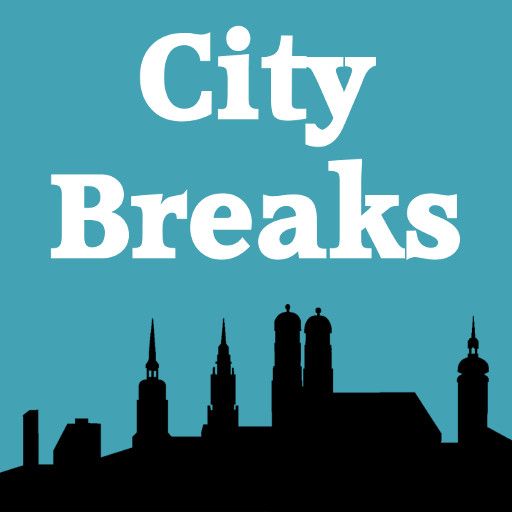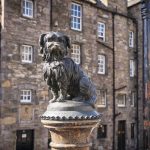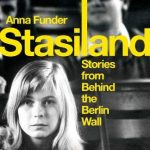Welkom in Amsterdam! This introduction to our Amsterdam series brings you information to help you get your bearings and pick up the basic facts which underpin everything. Below you will also find a list of all the episodes in the series, followed by reading ideas and useful links. To capture the spirit of Amsterdam, here’s Russell Shorto’s description of the view from his Amsterdam window: ‘the little boats moored by the quay, the row of tilting, gabled buildings on the opposite bank and, on any given day, a couple of bicycles chained to the railing of a hump-backed bridge.’
There’s much to discover and our 12 Amsterdam episodes will bring you all the background history and culture you need to really understand the city. In short, here is all the research you’d do yourself if only you had the time! See below for reading ideas and useful links, then let’s go, or as the Dutch say ‘laten we gaan’.
Get Your Bearings


The saying goes that ‘God made the earth, but the Dutch made Holland’ and nowhere is that truer than in Amsterdam, whose first settlers dug out little islands from the marshland where the River Amstel flows into the North Sea. They made dikes and a dam to keep the water away and drove wooden piles 12m down into the sand to support the houses they built. The Royal Palace, for example, begun in 1648, sits on top of 13,659 wooden piles which stop it sinking into the swamp below. Today, Amsterdam’s waterfront sits behind the Centraal Station with docks – Oosterdok and Westerdok – to either side and a network of 150 canals, streets and connecting bridges forming the city centre.
4 main canals loop down in concentric circles south of the station and surround the medieval centre of the city: the Singel, the Herengracht, the Keizersgracht and the Prinsengracht, criss-crossed by a network of smaller canals and streets. Dam Square, a few minutes’ walk south of the station is the hub of the city, the site of the Royal Palace and the Nieuwe Kerk, the most important church in the Netherlands. Areas of note just outside the centre include The Museum Quarter to the south, where you’ll find the top art galleries and the Vondel Park and the Plantage district to the east, home to the city’s Jewish Quarter and also its Botanical Gardens and Zoo.
a little history


Amsterdam began life as a small fishing village in the 13th century. Its successful herring trade developed into boat-building and then the city’s merchants began moving goods between the Baltic and southern Europe. By the 15th century, Amsterdam was a centre of great wealth and influence. The 16th century brought a huge change known somewhat euphemistically as the Alteration. In 1578 a rebellion led by William, Prince of Orange drove most Catholic priests from the city and the Dutch Reformed Church took over. This in turn attracted many Flemish refugees to Amsterdam, followed by Jews expelled from Portugal and eastern Europe. The population tripled between 1565 and 1618 and trade flourished.


The 17th century was Amsterdam’s Golden Age. New trade routes to the East Indies and South America led to the founding of the Dutch East India Company (the Verenigde Oostindische Compagnie, or VOC) which brought vast wealth and saw the building of the Three Canals (the Herengracht, Keizersgracht, and Prinsengracht) and a stately new city hall in Dam Square, later the Royal Palace. This was also the period of the Tulip Mania, leading to the great Tulip Crash in 1637. Amsterdam was now the financial, trading, and cultural centre of the world, at least until overtaken in importance by cities such as London and Hamburg in the 18th century.
Amsterdam never again reached such heights, The French occupied the Netherlands for a few years under Napoleon, who installed his brother Louis Bonaparte as King of Holland until he was ousted by William, Prince of Orange. Impressive buildings like the Centraal Station and the Rijksmuseum date from the late 19th century, but the 20th century brought horror. The country was occupied by the German army during World War II and 100,000 Dutch Jews were deported to the death camps, a higher proportion than in any European country except Poland. Some 20,000 people died during the Hunger Winter of 1944-5.
Rebuilding began soon after the end of the war and in 1958 the Netherlands became a founder member of the European Union.
what makes amsterdam unique?


Canals and bridges: the canals, lined with high-gabled houses and dotted with more than 1200 bridges, mostly small and hump-backed, give Amsterdam its unique atmosphere. Stand on the corner of Reguliersgracht and Herengracht and look around you to spot 14 bridges, in fact 15 if you count the one you’re standing on.
Bikes: there are said to be about 2 million tweewielers in Amsterdam, which is nearly 2 for every person living there! They’re mostly old-school bikes, without gears and fitted with handlebar baskets and, for parents, also a toddler carriage so they can pedal a child (or children!) around too. Colourful bikes featuring baskets of flowers and an advertising panel are often padlocked in prominent positions on bridges with lots of passing traffic.
Stroopwafel: these sticky wafer biscuits, sandwiched together with syrup are the snack you have to try at least once, available in markets and from take-away stands, or from popular specialist shops such as Van Wonderen in Kalverstraat.


Liberalism: ‘Amsterdam is famous for one thing (besides canals and cannabis cafes and prostitutes)’ wrote Russell Shorto, ‘the tattered, ancient, much-misunderstood word liberalism. Amsterdam is, by most accounts, the most liberal place on earth.’
Orange: Sean Condon summed up the mania for the colour orange in this description of the preparations for Queen’s Day in his Amsterdam memoir My ‘Dam Life: ‘Cafes, restaurants and bars were festooned with orange crepe paper, orange-framed pictures of Queen Beatrix and flashing orange lights ….. Billboards featuring women wearing orange underwear were everywhere. Sales of orange juice soared. Oranjeboom beer was the alcohol of the moment. Orangina was liquid gold.’
In the next post, we’ll be describing 5 walks around the city, highlighting many of the top things to see. Meanwhile, we recommend below some useful links and staple guidebooks which proved useful in our research. And, if you fancy doing some reading around Amsterdam, also some history books, novels and short stories set there.
Listen to the podcast
OTHER posts in the amsterdam series
This is our current series. The list shows what posts are planned and as they are written, the titles will become links to take you straight there.
Anne Frank and World War II in Amsterdam
Rembrandt, Vermeer and the Rijksmuseum
Van Gogh, the Man and the Museum
Tulips and Diamonds
Food and Shopping
Amsterdam Anthology
links and reading
4 Useful websites for tourists
I Amsterdam
Amsterdam Info
Holland.com / Amsterdam
Introducing Amsterdam
Useful guidebooks
Lonely Planet Pocket Amsterdam Guide
Eyewitness Guide Top 10 Amsterdam
Pocket Rough Guide to Amsterdam
Marco Polo Pocket Travel Guide to Amsterdam
Amsterdam Like a Local
The Invention of Amsterdam A History of Europe’s Greatest City in 10 Walks by Ben Coates
History
Amsterdam A Brief Life of the City by Geert Mak
Amsterdam A History of the World’s Most Liberal City by Russell Shorto
The Embarrassment of Riches Dutch Culture in the Golden Age by Simon Schama
The Tulip by Anna Pavord
2 Anthologies
Amsterdam City-Pick edited by Heather Reyes and Victor Schiferli
Amsterdam Tales Edited by Helen Constantine
Biography and Autobiography
Rembrandt by Michael Bockermuhl
Van Gogh by Steven Naifeh and Gregory White-Smith
The Diary of a Young Girl by Anne Frank
The Many Lives of Jan Six by Geert Mak
My ‘Dam Life by Sean Condon
Fiction set in Amsterdam
Tulip Fever by Deborah Moggach
The Coffee Trader by David Liss
Amsterdam Stories by Nescio
Last Updated on August 8, 2025 by Marian Jones






